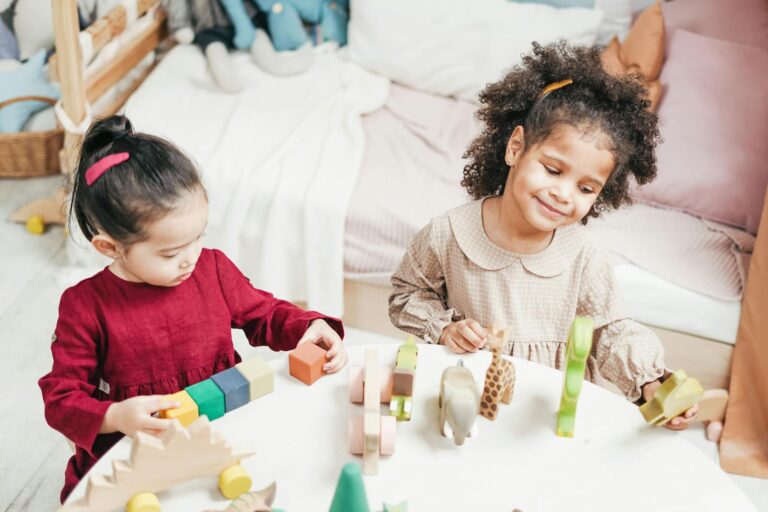Positive parenting is all about helping kids become confident, emotionally healthy adults. It relies on supportive guidance and clear boundaries. When you focus on connection, open communication, and keeping expectations steady, your relationship with your child gets stronger and their natural development stays on track. This approach builds trust and teaches your child important skills they’ll use for life.
The heart of positive parenting is understanding a few core ideas you can use every day. These include being warm and affectionate, setting fair limits, and helping kids learn from mistakes. Positive parenting strengthens the parent-child relationship with respect and good communication, which leads to better outcomes for both of you.
Kids all grow at their own speed. Your parenting style should shift as they do. Toddlers are figuring out big emotions, while teenagers want more independence. Each stage calls for a different approach. When you understand these changes, you’re better able to support your child at every age and keep your connection strong.
Core Principles of Positive Parenting
Positive parenting is built on proven strategies that help kids grow up healthy and confident. The main ideas focus on safety, strong relationships, and supporting everyone’s wellbeing.
What Is Positive Parenting?
Positive parenting is a way to encourage healthy behaviors in kids while taking care of yourself, too. It’s about building lasting bonds and preventing family conflicts before they start.
This method uses firm guidelines, but always with warmth and understanding. You set rules, but you also show love.
There are five basic principles at the core of this style:
• Safe and engaging environment
• Positive learning opportunities
• Assertive discipline
• Realistic expectations
• Parental self-care
These ideas help you be the kind of leader your child needs, no matter their age.
Key Benefits for Healthy Child Development
Positive parenting has a big impact on healthy child development. When you use these methods, your child learns to trust, explore, and build confidence.
Kids get better at handling emotions when you stay calm. They watch you deal with stress and disappointment and pick up on those skills.
Social skills get a boost when you teach by example. Kids who see respectful communication at home tend to use it with friends and teachers, too.
Academic performance often improves with positive parenting. When children feel secure, they can focus and learn more easily.
Long-term benefits include:
• Higher self-esteem
• Better decision-making
• Stronger problem-solving
• Fewer behavior problems
Supportive environments help your child’s brain develop. Their ability to learn and grow expands when they feel safe and understood.
Positive Parent-Child Relationships
Strong relationships are the core of positive parenting. You build these through daily moments and consistent responses.
Show affection often and notice your child’s efforts. A simple “Great job!” can help your child feel seen and valued.
Keep communication open by listening without judging. Ask about your child’s day and show real interest in what they say.
Trust grows when you keep your promises. Your child learns they can rely on you for support.
Ways to build connection:
• Eat meals together without screens
• Spend one-on-one time regularly
• Give age-appropriate responsibilities
• Solve problems together
When your relationship is strong, your child feels safe enough to try new things and learn from mistakes.
Foundational Positive Parenting Techniques
Strong parenting usually comes down to four basics: set clear rules, model good behavior, communicate openly, and help your child manage their feelings. These work together to create a safe place for kids to grow.
Setting Clear Boundaries
Boundaries help kids feel safe. When you set limits, be clear about what you expect and what happens if rules aren’t followed.
Age-Appropriate Boundaries:
- Toddlers (1-3 years): Simple rules like “no hitting” or “toys stay in the playroom”
- Preschoolers (3-5 years): Bedtime routines and sharing with others
- School-age (6-12 years): Homework and chores
Stick with your rules. If screen time ends at 8 PM, keep it that way. Kids need consistency to know what’s expected.
Explain why rules exist. Instead of just saying “no,” try “We don’t throw toys because someone could get hurt.” Kids are more likely to listen when they understand the reason.
Setting limits and handling conflicts positively gives kids the skills to face challenges with confidence.
Modeling Positive Behaviors
Kids watch what you do more than what you say. Your actions show them how to behave.
Treat others with respect. Say “please” and “thank you.” Stay calm during disagreements.
Behaviors to Model:
- Try to solve problems instead of giving up
- Apologize when you make mistakes
- Be kind to others
- Handle stress in healthy ways
If you mess up, own it. Say, “I’m sorry I raised my voice. I was frustrated, but that wasn’t okay.” This shows kids everyone makes mistakes and how to fix them.
Talk about your feelings in simple ways. “I’m feeling stressed, so I’m going to take a few deep breaths.” Kids learn how to handle tough emotions by watching you.
Effective Communication with Children
Good communication helps your child feel heard. Listen to their words and feelings, not just their actions.
Get down to your child’s level when talking. Put away your phone and give your attention.
Tips for Better Communication:
- Use simple words for little kids
- Ask open-ended questions like “How was your day?”
- Repeat back what you hear: “You sound upset about what happened at school”
- Give them time to answer
Encouraging open communication makes your relationship stronger.
Try not to lecture or talk too much. Let your child share their thoughts and don’t rush to fix everything.
Encouraging Emotional Regulation
Teaching kids to manage feelings is huge. Help them name their emotions first.
When your child is upset, stay calm. You can say, “I see you’re angry. Let’s take some deep breaths together.” This helps them see that big feelings are normal and can be handled.
Ways to Practice Emotional Regulation:
- Deep breathing: Count to five as you breathe in and out
- Feeling words: Teach them to say “I feel frustrated” instead of acting out
- Cool-down time: Make a quiet spot where they can calm down
- Physical activity: Let them run, jump, or stretch to release energy
Practice these skills when things are calm, not just during meltdowns. Read books about feelings or talk about emotions you see in movies.
Emotional regulation takes time. Young kids’ brains are still growing, so be patient as they learn.
Positive Discipline Strategies for Growth
Discipline should teach kids how to behave, not just punish them. This builds confidence and decision-making skills, and helps your relationship grow through respect.
Positive Discipline Versus Punishment
Traditional punishment tries to stop bad behavior with things like timeouts or taking away privileges. Positive discipline is different — it’s about teaching and guiding kids to make better choices.
How They Differ:
| Punishment | Positive Discipline |
|---|---|
| Focuses on what went wrong | Teaches what to do instead |
| Uses fear or shame | Uses natural consequences |
| Parent controls everything | Child learns self-control |
| Only works short-term | Builds character for the long run |
When your child messes up, try asking, “What can we learn from this?” instead of “What’s your punishment?” It helps them understand their actions.
Positive discipline helps kids build motivation from within. They learn to make good choices because they get why it matters.
Building Self-Esteem Through Guidance
How you talk and act during tough moments really shapes your child’s self-worth. Focus on the behavior, not who your child is.
Say, “That choice didn’t work out,” instead of, “You’re being bad.” This keeps their self-esteem safe while still correcting the problem.
Guidance That Works:
- Acknowledge feelings: “I see you’re mad about sharing your toy”
- Set clear expectations: “We use gentle hands with friends”
- Offer support: “How can I help you make a better choice?”
Positive parenting techniques strengthen your bond even when things are hard. When kids feel heard and supported, they’re more likely to cooperate.
Show the behavior you want to see. Kids learn more by watching how you handle stress than from any lecture.
Empowering Children with Choices
Letting kids make choices (within limits) builds confidence and cuts down on power struggles. Even little ones can pick between simple options.
For toddlers, try, “Do you want to brush your teeth first or put on pajamas first?” They get some control, but both things get done.
Choice-Based Ideas:
- Natural consequences: Let kids see what happens when they make choices (as long as it’s safe)
- Solve problems together: “What ideas do you have to fix this?”
- Daily decisions: Let them help decide on routines or activities
Giving kids choices teaches responsibility and decision-making. They start to think ahead about what might happen.
If your child makes a poor choice, help them figure out a better one. Ask, “What would happen if you tried this instead?” It builds problem-solving skills.
Learning takes time. Your patience and steady support help your child grow into a capable adult.
Adapting Positive Parenting Tips by Developmental Stages
Kids change fast, and your parenting needs to keep up. Knowing what to expect at each age helps you pick the right approach.
Tailoring Parenting to Developmental Needs
Different ages need different strategies. What works for a toddler won’t work for a teen.
Infants (0-12 months) need lots of cuddles and steady routines. Try to respond quickly when they cry and set regular times for feeding and sleep.
Toddlers (1-3 years) are busy learning to walk and talk. They need simple rules and lots of patience. Distraction usually works better than long explanations.
Preschoolers (3-5 years) can follow basic rules and understand simple consequences. Preschool years are full of growth in thinking, social, and emotional skills. Time-outs and short explanations start to make sense here.
School-age kids (6-12 years) can handle more complex talks. Give them clear expectations and let them make some choices.
Teenagers (13-18 years) crave independence but still need boundaries. Listen to their opinions and include them in decisions when you can.
Supporting Children Through Milestones
Developmental milestones are things most kids do by a certain age, like crawling, talking, or sharing.
Physical milestones like crawling and jumping need safe places to practice.
Language milestones include first words and conversations. Read together and talk about what you’re doing.
Social milestones like sharing and playing with others come from practice and good examples.
Emotional milestones are about handling feelings and showing empathy. Help your child name emotions and show them healthy ways to express them.
Don’t stress if your child hits milestones at a different time than others. Every child grows at their own pace.
Trusted Resources for Parenting Guidance
The CDC has some great positive parenting tips for healthy child development and they’re sorted by age group, which makes things a bit easier. These tips are based on research, so you get a good sense of what might come up at each stage.
CDC resources include:
- Tip sheets for different ages
- Checklists for developmental milestones
- Safety guidelines for each stage
- Activity ideas to help your child grow
Other solid sources are your child’s pediatrician, licensed family therapists, or even parenting classes at local hospitals or community centers.
A few warning signs to keep an eye on: missing milestones, sudden changes in behavior, or losing skills your child once had. If something feels off, it’s worth checking in with your doctor.
Honestly, parenting is a constant learning curve. As your child grows, you’ll keep picking up new things along the way.




